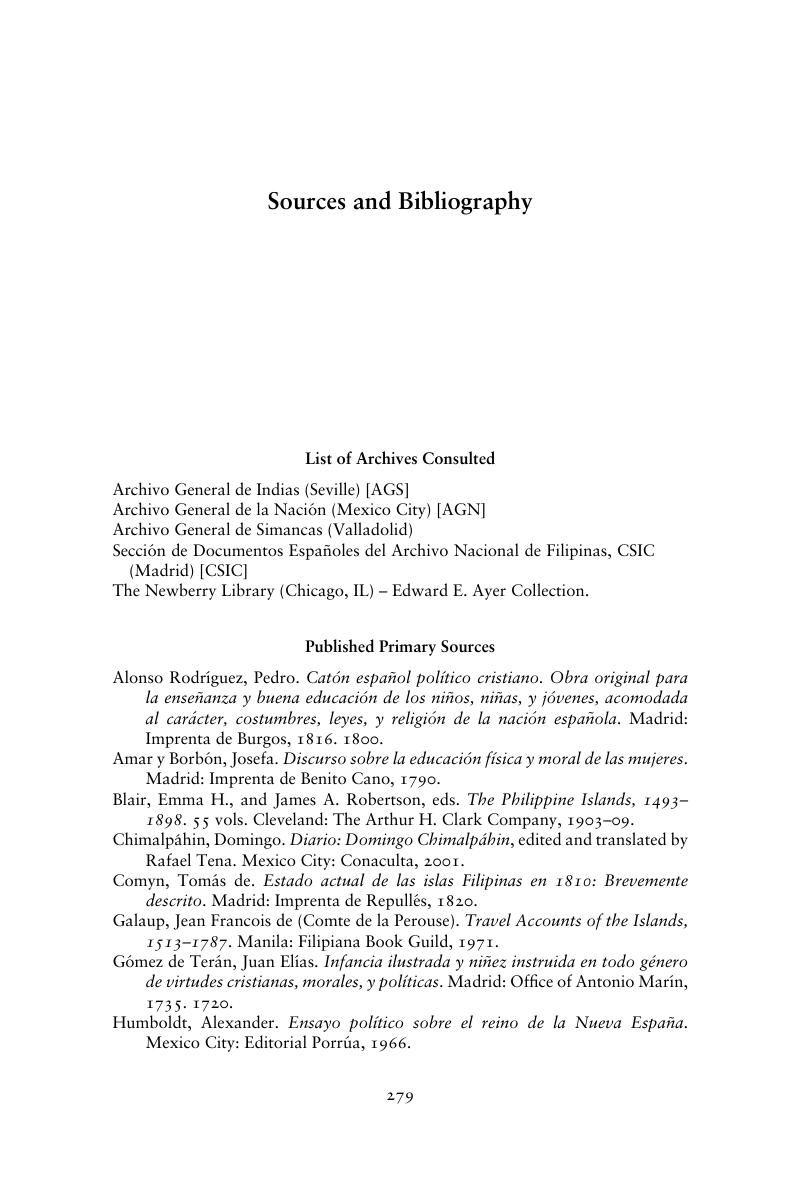Book contents
- Half title page
- Title page
- Copyright page
- Dedication
- Contents
- Contents
- Book part
- Introduction
- 1 Intertwined Histories in the Pacific
- 2 Convicts and Soldiers in the Spanish Empire
- 3 Poverty, Criminality, and the Bourbon State
- 4 Levies for the Philippines in Late Colonial Mexico
- 5 Spontaneous Requests for Deportation
- 6 Unruly Mexicans in Manila
- Conclusion
- Book part
- Bibliography
- Index
- References
Bibliography
Published online by Cambridge University Press: 05 June 2016
- Half title page
- Title page
- Copyright page
- Dedication
- Contents
- Contents
- Book part
- Introduction
- 1 Intertwined Histories in the Pacific
- 2 Convicts and Soldiers in the Spanish Empire
- 3 Poverty, Criminality, and the Bourbon State
- 4 Levies for the Philippines in Late Colonial Mexico
- 5 Spontaneous Requests for Deportation
- 6 Unruly Mexicans in Manila
- Conclusion
- Book part
- Bibliography
- Index
- References
Summary

- Type
- Chapter
- Information
- Forced Migration in the Spanish Pacific WorldFrom Mexico to the Philippines, 1765–1811, pp. 279 - 302Publisher: Cambridge University PressPrint publication year: 2016



